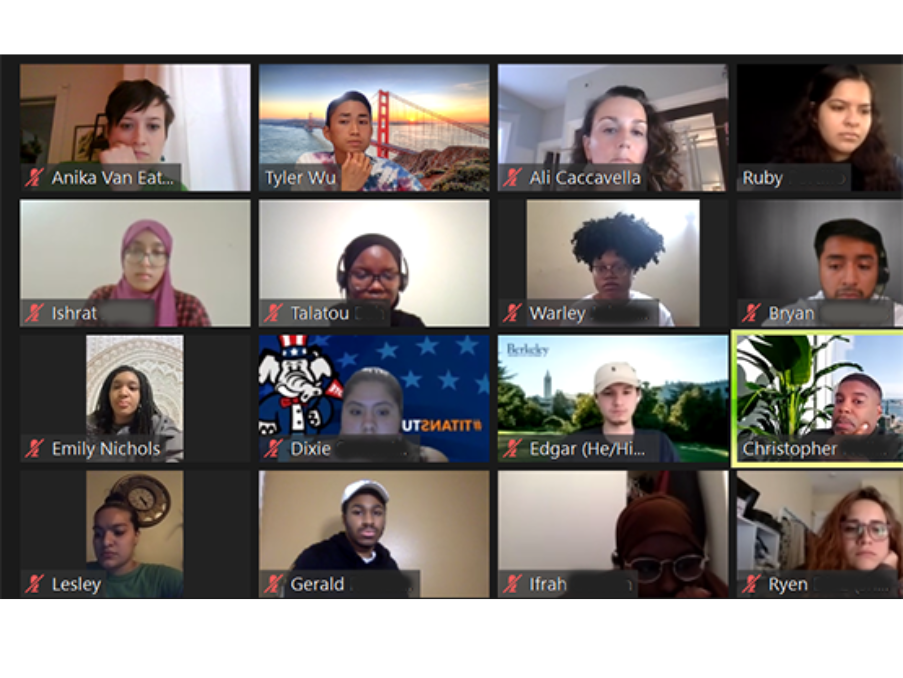Blogs
Solutions Students Need to Cover the Real Cost of College
December 11, 2020
By uAspire Student Advocacy Fellows
.png)
Authors: Lesley Baez, Talatou Bah, Rochelle Bernarte, Ryen Diaz, Aleina Dume, and Ruby Portillo
Students’ college costs go well beyond tuition. Even with financial aid, Pell Grants, and scholarships, some students do not have enough money and face the unfortunate reality of unstable housing, food insecurity, and insufficient funds for course materials. Policymakers need to do more to support students by increasing Pell Grants, standardizing indirect expense communications and calculations, ensuring affordable housing, supporting food security initiatives, and reducing textbook costs. These solutions can give financially struggling students a chance to complete their degree without thinking of discontinuation.
The Problem
According to the National Center for Education Statistics, the average tuition cost at any 4-year institution is $20,471, however we know the real cost of college exceeds well beyond tuition alone. Additional educational expenses including housing, food, and course materials are required to succeed and complete our degree. Yet, these “indirect expenses” are rarely calculated in a way that accurately depicts the cost. A uAspire report found that indirect expense estimates for two colleges less than a half-mile apart differed by $8,730 in New York and by $15,036 in Philadelphia. Furthermore, indirect expenses are often labeled with inconsistent and ambiguous terms, making the costs unlear. Broad generalizations and out-dated information in calculating expenses make it difficult for prospective students to assess the college’s actual price. Confusion and uncertainty leave many students guessing when it comes to college costs.
Financial aid is insufficient for too many students to cover the full cost of attending college. According to the College and University Food Bank Alliance, 30% of college students are food insecure, with many already working and receiving financial aid. Additionally, course material costs can vary widely depending on the school and major. In the past, the Pell Grant covered almost 80% of the costs of attending a 4-year public college. According to TICAS, today the maximum Pell grant only covers around 28% leaving a student to make up the other 72% on their own. The financial burden attached to obtaining a college degree is the top reason cited by students for dropping out of college.
Policy Recommendations
We propose the following solutions to clearly communicate the full cost of college and remove financial barriers to student success.
- Double the Pell Grant. Doubling Pell Grant funding will relieve students of the need to take on as much debt. NCAN estimates doubling Pell would cover 56% of an average 4-year public degree. Addressing transportation costs, books, food, and other basic needs through increased Pell funding would grant students the capacity to focus on their courses, internships, and further opportunities for growth that a college education provides.
- Standardize indirect expense terms and calculations. A transparent, consistent formula to calculate indirect costs will allow students, both prospective and enrolled, to prepare for their upcoming educational expenses. For students interested in attending college, the ability to accurately compare financial aid packages would prevent them from being blindsided by unexpected costs and enable them to make an informed decision in their best interest. Colleges that participate in state and federal financial aid programs should be required to display accurate indirect costs on their websites to help students make their college decisions and budget.
- Promote partnerships to create affordable housing for students. Affordable housing will relieve the rent burden on many students. Although, understandably, students have better access to amenities on campus, the rent on many campuses is so high that it escalates the rent in the surrounding areas. Some students can avoid these costs by living at home and commuting, but this is not a viable option for many students. Leverage federal investments to promote campus and housing authority partnerships for subsidized student housing.
- Support solutions to decrease student food insecurity. Several strategies can reduce student hunger. First, promote funding for food pantries on college campuses. Second, simplify access to SNAP by streamlining the application and increasing eligibility. Third, require that colleges provide students with benefit program information, applications, and well-trained support services.
- Fund zero-cost textbook programs. Federally funding these programs will help relieve the burden of additional costs on students. Textbooks can cost upwards of hundreds of dollars per semester. Some classes even require the purchase of a supplementary online program to complete and submit homework. The Department of Education should create a zero-cost textbook program to significantly help low-income students who too often go without textbooks due to their high cost.
The difficulties students face while trying to mount the unforeseen costs of receiving an education pose barriers to their academic success. Despite skyrocketing increases over the past two decades in rent, food, and course materials, federal Pell Grant funding has not kept pace, failing to meet the needs of millions of struggling students across the country. Policymakers must act urgently in responding to students’ dire pleas who are balancing studies, eviction, and hunger. Without government support, we fail to nurture this country’s future leaders’ growth and potential, and we will all suffer as a result. We are these students, and these are our stories.
uAspire Advocacy Fellowship
Through a paid fellowship program, uAspire college student Advocacy Fellows build advocacy skills and execute campaigns to advance higher education affordability and equity.
For more information: Ali Caccavella, Vice President of Policy and Systems Change, ali@uaspire.org